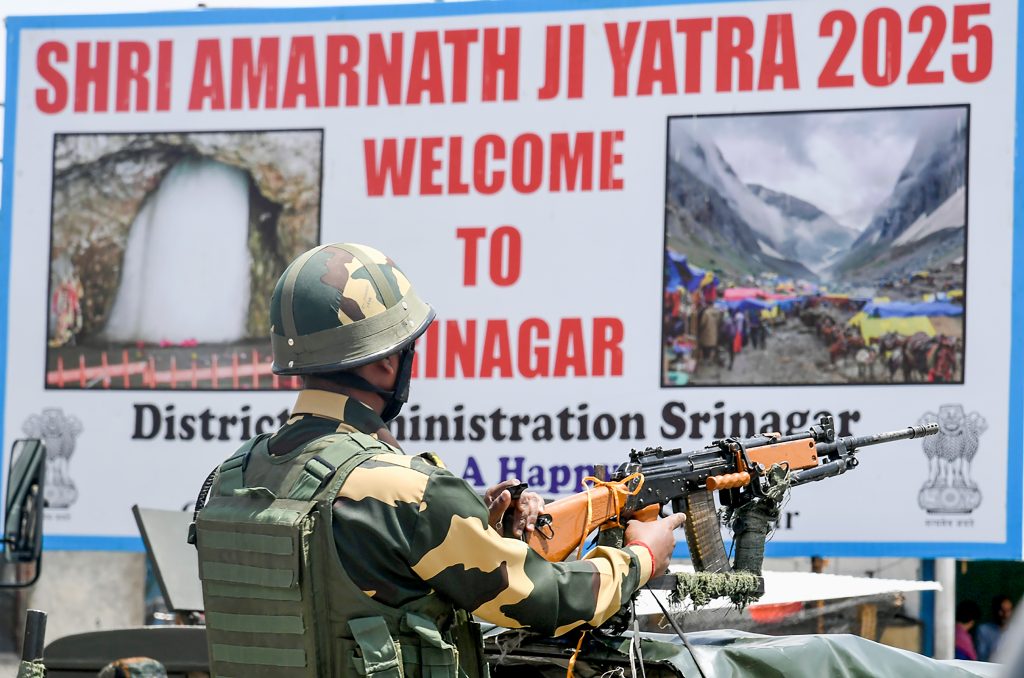The Amarnath Yatra: Journey To Shiva’s Himalayan Abode
Jammu and Kashmir Lieutenant Governor Manoj Sinha on Wednesday flagged off the first batch of pilgrims for the annual Amarnath Yatra from Jammu to the Kashmir Valley, marking the start of the 36-day pilgrimage, which officially begins on Thursday.
Every year thousands of devotees embark on the Amarnath Yatra amid tight security arrangements in the Kashmir Valley.
According to the Shri Amarnathji Shrine Board (SASB), the Holy Amarnath Cave is situated at a high altitude of 3,888 metres in a narrow gorge at the end of the Lidder Valley. The Shrine is located approximately 46 kilometers from the Pahalgam base and 14 kilometers from the Baltal base.
While ancient traditions prescribed Srinagar as the starting point for the pilgrimage, most modern-day pilgrims now start their Yatra from Chandanwari for a five-day trek. The traditional Pahalgam base camp itself is located about 96 kilometers from Srinagar.
The cave shrine is considered one of the major Hindu Dhams and is believed to be the abode of Lord Shiva, according to the Shrine Board. Inside the cave, a naturally formed ice stalagmite, or lingam, symbolizes Lord Shiva. This sacred formation is said to wax and wane with the phases of the moon, enhancing its mystical allure for devotees.
Although references to the Holy Cave appear in ancient texts such as the Puranas, its re-discovery is credited to a local shepherd, Buta Malik, says the Shrine Board. Since then, the site has become a major center of Hindu pilgrimage.
The Amarnath Yatra can be undertaken via two routes: the traditional Pahalgam route, approximately 32 kilometers long, and the shorter, steeper Baltal route, about 14 kilometers in length. The Baltal base camp is located near Sonamarg in Ganderbal district, roughly 95 kilometers from Srinagar. The Pahalgam base camp is located at Nunwan in Anantnag district, around 90 kilometers from Srinagar.
Access control gates for the Yatra are set up at Domail, 2.5 kilometers from Baltal, and at Chandanwari, 12 kilometers from Nunwan. Both Jammu and Srinagar offer year-round connectivity by road, rail, and air, making the pilgrimage accessible to devotees from across the country.















